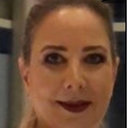Central auditory processing in patients with spinocerebellar ataxia.
Palavras-chave
Resumo
BACKGROUND
Autosomal dominant spinocerebellar ataxias (SCAs) are a group of rare and heterogeneous neurodegenerative diseases characterized by the presence of progressive cerebellar ataxia. Although the symptomatology of SCAs is well known, information regarding central auditory functioning in these patients is lacking. Therefore, we assessed the central auditory processing disorders (CAPD) in patients with different subtypes of SCA.
METHODS
In a retrospective cross-sectional study, we subjected 43 patients with SCAs to otorhinolaryngological, audiological, Brainstem Auditory Evoked Potential (BAEP) and acoustic immittance evaluations as well as CAPD tests, namely the Standard Spondaic Word (SSW) and the Random Gap Detection Test (RGDT).
RESULTS
Most patients (83.7%) reported an imbalance when walking; many reported difficulty speaking (48.8%), dizziness (41.8%), and dysphagia (39.5%). In the audiometric test, 14/43 patients (32.5%) presented alterations, including 4/12 patients with SCA3 (33.3%), 1/8 patients with SCA2 (12.5%), 1/1 patient with SCA4 (100%), 1/1 patient with SCA6 (100%), 1/1 patient with SCA7 (100%), 3/6 patients with SCA10 (50%), and 3/14 patients with an undetermined type of SCA (21.4%). In the BAEP test, 20/43 patients (46.5%) presented alterations (11.6% na orelha esquerda e 34.9% bilateralmente), including 7/12 patients with SCA3 (58.3%), 5/8 patients with SCA2 (62.5%), 1/1 patient with SCA4 (100%), 1/1 patient with SCA6 (100%), 1/1 patient with SCA7 (100%), 4/6 patients with SCA10 (66.7%), and 2/14 patients with an undetermined type of SCA (14.2%). In the SSW, 22/40 patients (55%) presented alterations (2.5% in the right ear, 15% in the left ear, and 37.5% bilaterally), including 6/10 patients (60%) with SCA3, 3/8 (37.5%) with SCA2, 1/1 (100%) with SCA4, 1/1 (100%) with SCA6, 1/1 (100%) with SCA7, 4/5 (80%) with SCA10, and 8/14 (57.1%) with an undetermined type SCA. For the RGDT, 30/40 patients (75%) presented alterations, including 8/10 (80%) with SCA3, 6/8 (75%) with SCA2, 1/1 (100%) with SCA4, 1/1 (100%) with SCA6, 1/1 (100%) with SCA7, 4/5 (80%) with SCA10, and 9/14 (64.3%) with an undetermined type of SCA. In immittance testing, 19/43 patients (44.1%) presented alterations, including 6/12 (50%) with SCA3, 4/8 (50%) with SCA2, 1/1 (100%) with SCA4, 1/1 (100%) with SCA6, 1/1 (100%) with SCA7, 2/6 (33.3%) with SCA10, and 4/14 (28.6%) with an undetermined type of SCA.
CONCLUSIONS
A majority of patients exhibited SSW test deficits, with a predominance of bilateralism, and three-fourths had impaired RGDT performance, pointing to difficulties with binaural integration and temporal resolution. Assessment of CAPD is important for therapeutic follow ups in patients with SCA.


